The end of the year means end of the year lists from critics of every stripe.
This year we limited our Review Crew to three picks at most, all of which had to have made their debut this year. (We were more lax in our rules for Best Moments, which you can also check out.)
2021 has been an incredibly strange, and undoubtedly difficult year. What you find below are some of the experiences that reminded us of why we do what we do. Each member of the Crew has their own list.
Up next in the series: Best of 2021 Podcast
BEST OF 2021 SERIES
- Best Immersive Moments
- Favorite Shows & Experiences
- Best of 2021 Podcast (12.24.21)
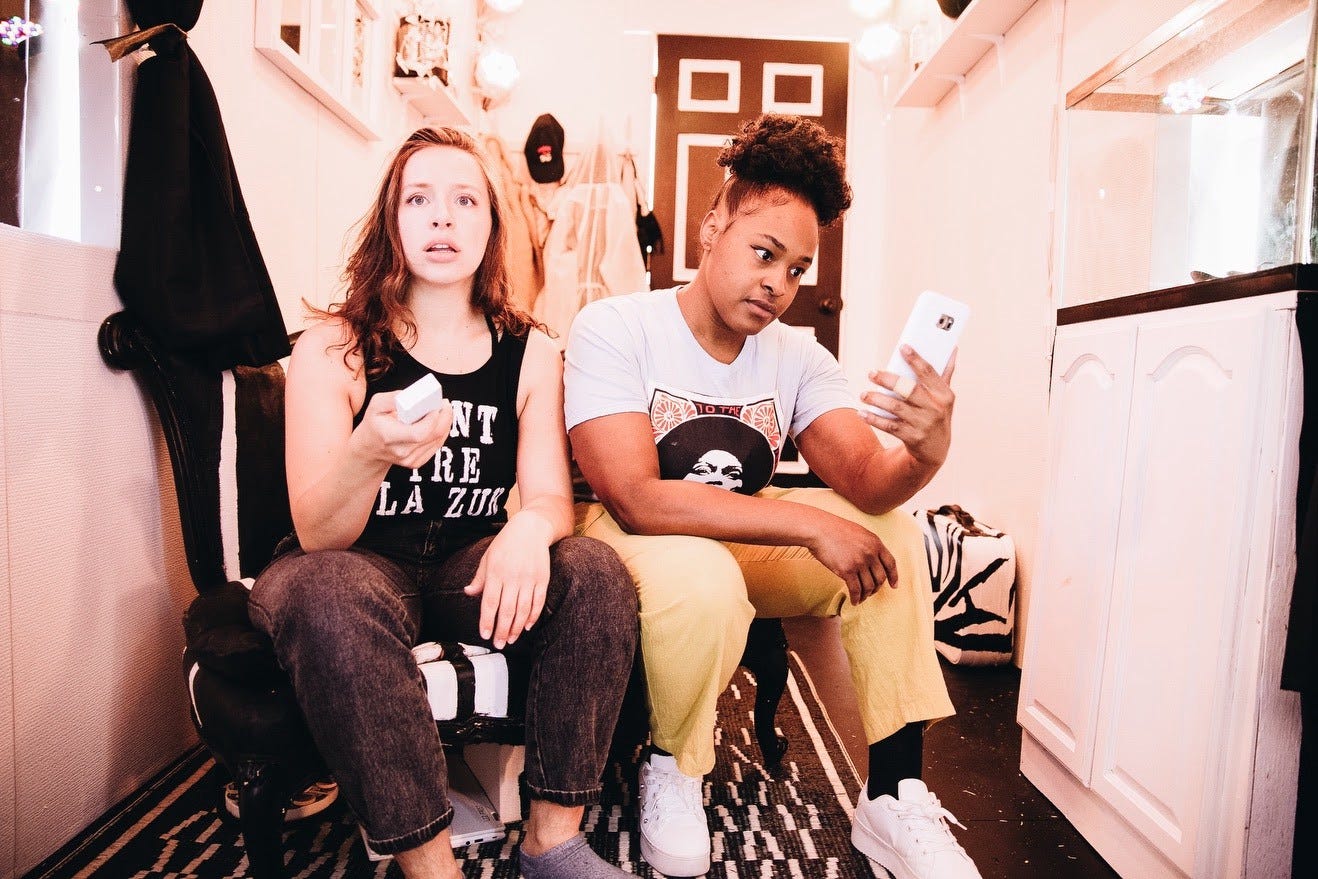
Asya Gorovits, NYC Correspondent
Utopian Hotline, Theatre Mitu
Taking place at MITU580, the company’s studio in Brooklyn, Utopian Hotline combined audio fragments fed to audience members via \ headphones and an elaborate installation consisting of many telephones, tape recorders, and microphones. Four femme performers, dressed in white jumpsuits and yellow socks, sang and delivered monologues through microphones and telephone receivers. Part sci-fi call center, part group therapy for those who long to connect, Utopian Hotline was a meditative and soothing experience. The plush pink carpet underneath my bare feet, the gentle hug of the headphones, the siren-like voices of the performers — the atmosphere was so calming I didn’t want to leave.
Zoetrope, Exquisite Corpse Company
The thrill of seeing my first in-person show aside, Zoetrope was nothing short of genius! It captured the spirit of the early months of the pandemic with tenderness, care, humor, and horror. Inspired by the zoetrope, an optical toy of the 19th century, pre-film era, the mobile venue featured a white cube studio apartment inside which a biracial couple is sheltering in place. Pairs and individual audience members were seated by the “windows” on four sides and chose the direction of the plot when prompted. Written by the playwrights Elinor T. Vanderburg, Leah Barker, and Emily Krause, Zoetrope featured dialogue generously peppered with humor and poetic, silent soliloquies.
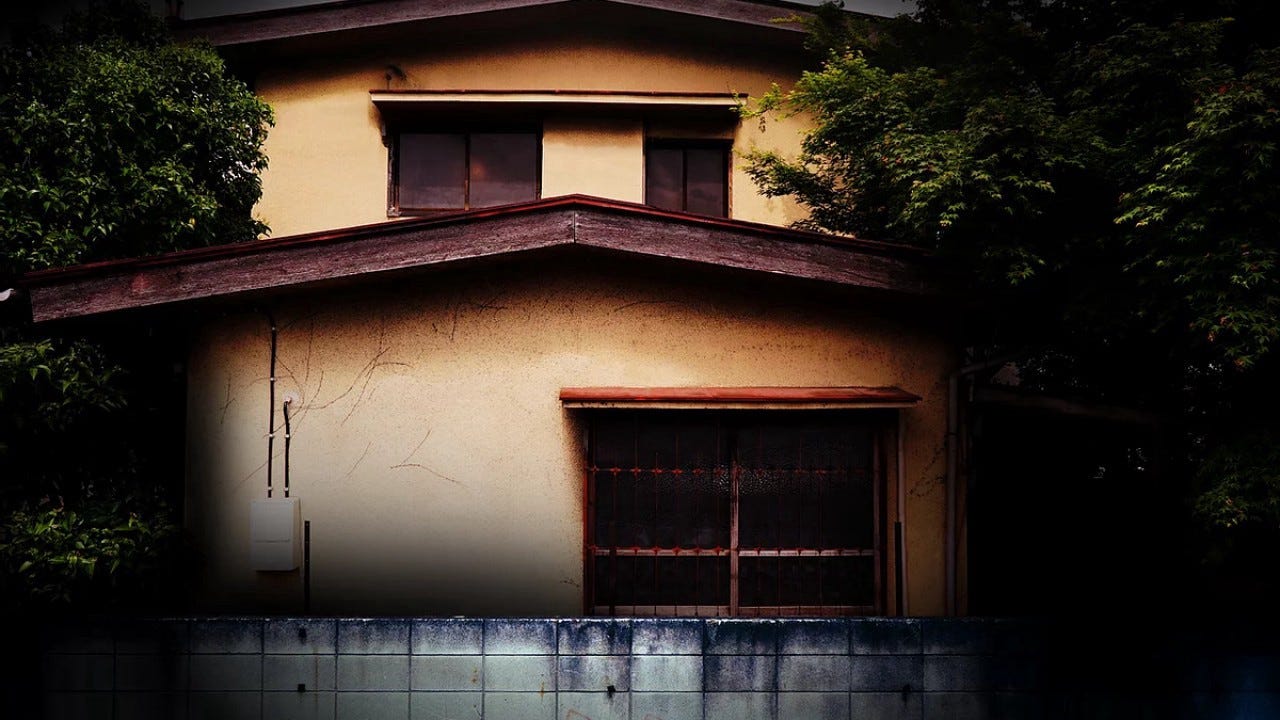
Blake Weil, East Coast Curator at Large
if MUSEBIYA- Hiding in the Dark Escaping from the Killer, Obaken
Every year, I try to award one show a best of the year slot for sheer fun, and if MUSEBIYA is all that and more. Combining a stunningly well constructed set in an actual suburban home, live and pre recorded footage, and the thrill of the (slim) possibility of survival, if MUSEBIYA is your chance to live a found-footage horror movie. By appropriating the techniques of an escape room, the horror is elevated, and the tension dialed up to 11. No other at home experience made me as actually scared as if MUSEBIYA, and that needs to be applauded.
Escape from the Science Lab of Shifting Rules, SCRAP
At home immersive so often frustrated by acting as a pale facsimile of in-person theatre. Escape rooms were particularly difficult to translate. SCRAP managed it though, with their Shifting Rules though. With a central premise familiar to fans of “Baba is You” (a device can change reality by filling in the blanks, i.e. “RED becomes Blue), SCRAP executed a series of delightful magic tricks to make the room shift in elaborate and surprising ways. Relying primarily on lateral thinking, the game felt fair without falling into escape room tropes, and presented something only possible in the remote age.
Artifacts of No Consequence, Jeff Evans
While most theatrical reactions to the COVID-19 pandemic struck me as a tad on the nose, Artifacts of No Consequence took a gentle and contemplative approach to the emotional state the pandemic left many of us in. Tender, lovely, and powerful, Jeff Evans created a warm hearted and lovely meditation on the ways humans lose pieces of themself as time marches on. It’s delightful, though, with surprise musical numbers, cringey childhood poetry, and an opportunity to fuss with a “Bop-It.” When I felt like I had no words for my feelings, Jeff Evans painted a picture worth all of them.
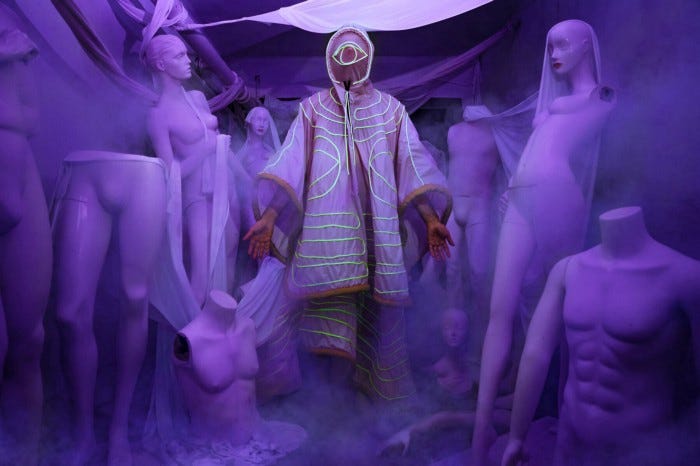
Edward Mylechreest, NYC Correspondent
Bottom of the Ocean, Andrew Hoepfner
A lovingly crafted trip to an underwater world, which involves stepping into the world of Andrew Hoepfner’s imagination. The basement of a church has been transformed into the titular space and through guided meditation you are welcomed to explore. Strange alien creatures welcome you into their world, and question you on your purpose while you soak in the darkly beautiful atmosphere around you.
This show is an evolution in ASMR/meditation-based shows, one which will define a new generation of immersive creators here in NYC. It’s a must-experience “experience” where you’ll have to go to fully understand the bountiful praise that is being lauded upon this beautiful show.
Endure: Run Woman Show, Melanie Jones
Accompany a woman as she trains for a marathon by running through Central Park. Learn more about her as you journey through the winding paths of this tourist destination, as you listen to her internal monologues. You can even run alongside her as you discover more about her story. Why is she running this marathon and what does it mean to her?
This semi-autobiographical tale has been cultivated over a 10 year process with performances around the globe. This year it landed in Central Park, to widespread critical acclaim, and was a real highlight of my year. Inspirational and stunningly simple in its premise and delivery, this excellent piece utilized its site-specificity wonderfully. I will forever remember this experience whenever I make my way through this NYC landmark, and hope that this landmark performance will make its way back to us again soon.
The Grown-Ups, Nightdrive
The end of the world is incoming, but the camp counselors have to try to maintain the inner world of this slightly problematic kids summer camp. Invited to sit with the team around a campfire, no topic is off limits in this hilarious dark comedy which brings up themes of depression, puberty, racism, relationships, and tradition. Learn what it means to grow up when the grown-ups in charge are barely grown-up themselves
This show proved that good immersive shows do not have to come with grand spectacle, when clever story takes precedence. And immersive theatre does not have to be serious and can be funny, genuinely funny. Wonderful performances from a talented cast meant that I was wholly invested in the fate of this world that we shared while sitting around a campfire toasting marshmallows.
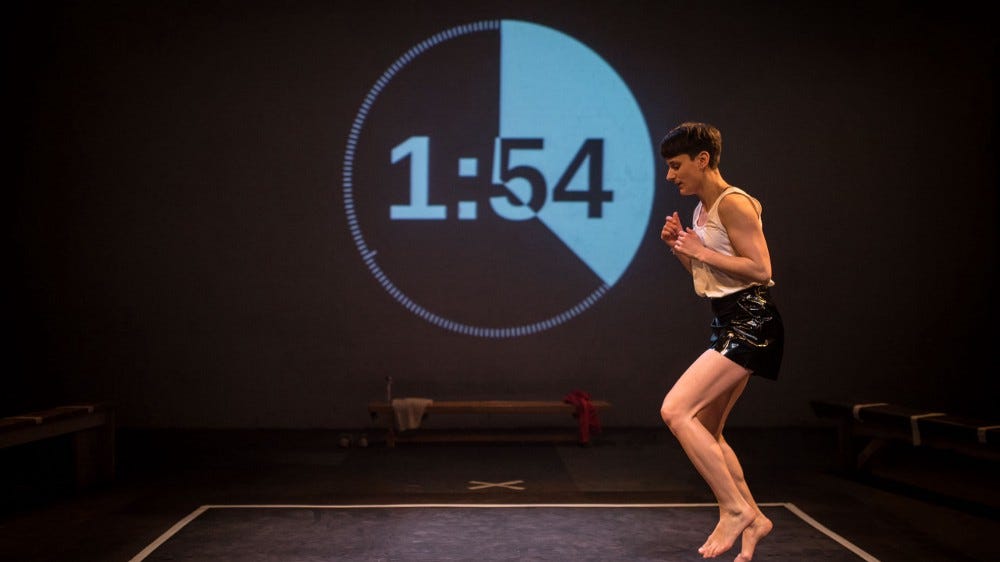
Kevin Gossett, LA Reviews Editor
Arcane: Enter the Under City, Secret Cinema
In a year with a brand new Creep and Delusion, I thought for sure one of them would make it onto my year-end list. And then Arcane happened. All three offered something that I’d been craving from immersive theatre since the onset of the pandemic, but Secret Cinema’s show was the one I wanted more of.
With a great set and terrific actors, the sandbox style experience created plenty of ways to play Arcane, whether you wanted to go hard or sit back and watch while sipping on a cocktail. I have more thoughts than I can possibly fit into this word count, but you can listen to the conversation I had with Arts Editor Laura Hess to hear them all.
Run Club, Ira Brand, presented by Tender Absence
Run Club was a show that created such a strong feeling of connection for me, that I can’t quite articulate the feeling. My rambling attempt to capture what it meant is right up there, but it feels inadequate to me. It created a connection so specific that it felt like a magic trick at the time, and a particularly vivid/hazy dream now.
I don’t care to try to explain what it means to me again, but I do know that it will stick with me for a long time.
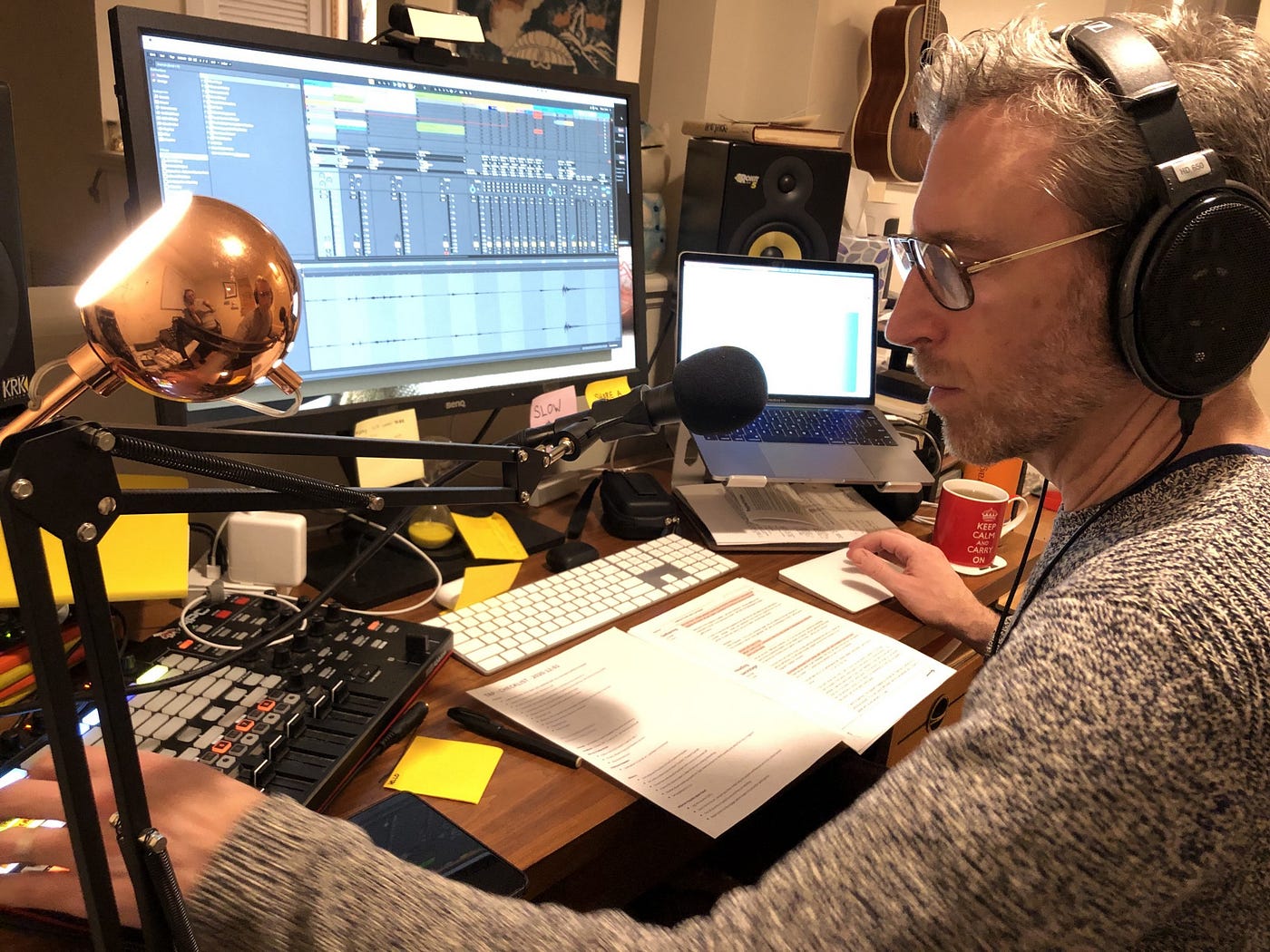
Laura Hess, Arts Editor
HIVE RISE, The Industry & LILLETH, in partnership with MOCA
Described as “a physical encounter with sound,” the experience was like none other. Shrouded in black gauze with their heads obscured, live performers held up black 3D-printed megaphones. Figures moved through the space, alone or in formation. There was no dialogue, only the choreography and eerie vocalizations which ranged from wind-like hushes to guttural screams. Performers’ manipulations of the megaphones created a doppler effect, both magnifying and tempering the sounds. Throughout the warehouse, speakers supplied audio from a central stage, on which materials such as paper were “played” against the vibrations of miked subwoofer speaker cones, creating a cacophonous and throbbing sonic thread. This was HIVE RISE.
Co-created by Ash Fure and LILLETH, HIVE RISE was produced by The Industry (best known for its experimental takes on opera). Conceived as a “training ground for tactical listening,” the show embodied themes of isolation, discord, and abuse, along with the desire to connect and the right to thrive. HIVE RISE articulated the primal heartbreak, rage, and existential loneliness of recent events such as the pandemic, and systemic issues such as colonization and injustices of all kinds. A profound communal exchange, the experience was a shattering example of the expressive, fundamental power of sound.
The Adjacent Possible, Joshua-Michéle Ross, Adam Brick, Adam Lucas
“There are no disappointments, only choices, limitations, and more choices.” So said Joshua-Michéle Ross, a creator and the “Conductor” of The Adjacent Possible, a virtual, interactive, and communal experience centered around the spontaneous co-creation of a musical work. Sensory limitations and participant anonymity fostered a unique environment of unspoken trust.
The production raised important questions around how we define intimacy, express connection, and the role equity plays. Only through experiencing the show did I realize how much I needed to feel that particular kind of connection, one which I couldn’t have even articulated before joining its peculiar “orchestra,” which required no musical knowledge or skill. What was so compelling was the exploration of intuition, trust, and consequence through communal listening. The Adjacent Possible isn’t about understanding how to make music; it’s about understanding how to listen. And through that deep listening, to ourselves and to each other, it’s about committing to our individual and collective decisions, and the weight of their effects.
TM, Ontroerend Goed
The Southern California landscape includes a casually ubiquitous, charged presence of religious (Scientology, Children of God, Heaven’s Gate, and — to a degree — NXIVM) and wellness-based entities (Ra Ma Institute, Bikram Choudhury), all of which align on a spectrum of scandal. So when I logged into my appointment time for TM, I felt a familiar sequence develop: an introductory video message and a testimonial montage with positive, vague, and transformational declarations; the common thread of course was TM. But what was TM exactly? A cast member interrupted my ripening hesitations and began to ask a series of questions. I’d been initiated and I was hooked.
Created by Ontroerend Goed, an established Belgian company specializing in experimental theatre, TM is adjacent to phone-based and in-person experiences like The Telelibrary and A Thousand Ways (Part 1 & Part 2), offering personalized intimacy through exploratory, often universal probings. Rooted in a complex theme, TM distills the experience down to an existential query through an acutely moving process. I didn’t anticipate where TM was headed because the show’s concentrated design is so brilliantly crafted. For anyone doubting the weight, innovation, and creativity of beautifully executed digital theatre, join TM. It will indeed transform you.
Honorable mentions: Arcane, Secret Cinema; Divine Immersion: The Experiential Art of Nick Dong, Nick Dong; Pipilotti Rist: Big Heartedness, Be My Neighbor, Pipilotti Rist; Satellite One, Chromasonic; Sun & Sea, Rugilė Barzdžiukaitė, Vaiva Grainytė, and Lina Lapelytė; The Plastic Bag Store, Robin Frohardt
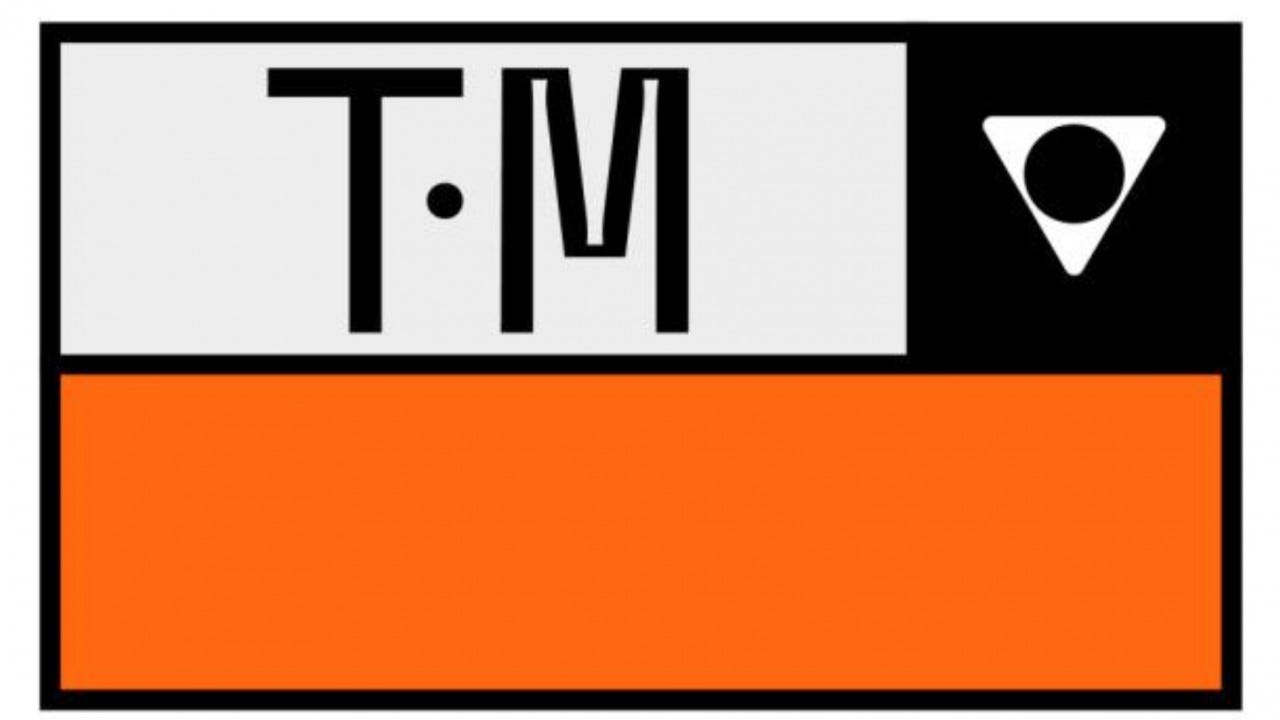
Leah Davis, New England Correspondent
Bottom Of The Ocean, Andrew Hoepfner
Technically, I saw BOTO while it was still in previews. But the show is such an intimate meditation on the creation of meaning and ritual — the kind we make from the messy detritus of personal experience — that including it on my list feels right. Or at least, not wrong. That’s the kind of dream logic Bottom Of The Ocean encourages. It’s an experience that blurs the lines between self and other, turning each interaction into an opportunity to question and observe. I love BOTO for being unapologetically sincere and strange, for embracing imperfection, and for letting me meet the pink jellyfish psychopomp of Bushwick’s underground gymnasium.
The City At Your Feet, Gabi Linde & Katherine Leung, presented by Tender Absence
I’m choosing this relatively mild show for my best-of-2021 list because it reminded me that our most impactful experiences don’t always have to be showy or intense. Instead, this city-agnostic audio tour had me wandering onto a university campus, writing poems, following my nose to laundry rooms, hiding messages for a stranger, and making floating art for a flock of indifferent geese and two very interested pigeons. As part of the Tender Absence “online-offline” performing arts festival, The City At Your Feet created space for me to reconnect with myself and the city I love after a year of taking both for granted.
TM, Ontroerend Goed
What can I say? I love a good cult. And this one drew me in hook, line, and sinker. I don’t want to spoil anything so I’ll keep this short by telling you what TM got wrong: nothing. Ontroerend Goed wove technology and empathy into an economically compelling experience meant to change lives. It certainly changed mine.
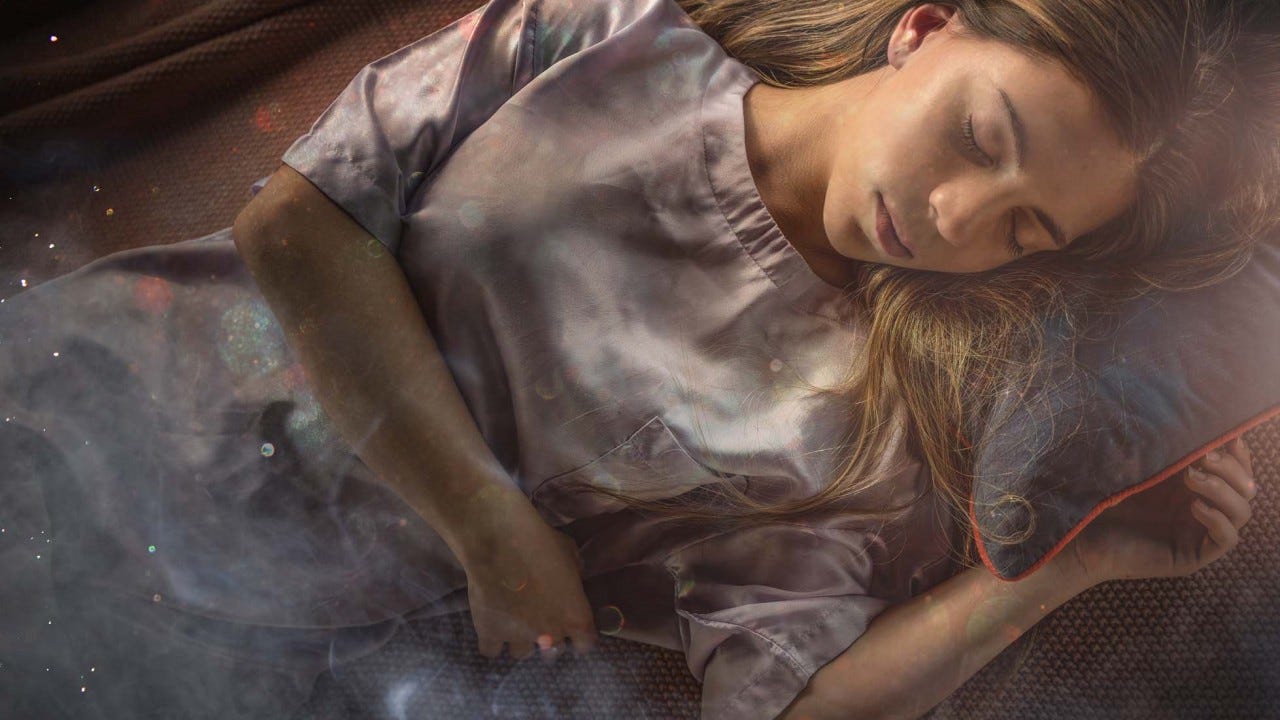
Patrick B. McLean, Chicago Curator
Goliath: Playing with Reality, Anagram
Goliath is a perfect summation of the ideal VR experience. While it’s an engrossing story, that’s only the tip of the iceberg. Goliath allows audiences to step into someone else’s uniquely personal life experiences set against a vivid and complex landscape. By living another’s life, it fosters a plethora of thought provoking ideas the audience can reflect back upon themselves. More so than any other VR experience I have done, Goliath showcases the medium’s power in allowing audiences to empathize and sympathize in ways beyond their own lives.
Into the Mist, Into the Mist
Premiering just short of a year into the pandemic, Into the Mist demonstrated online shows didn’t require a unique interface, a complex world or lore to explore, or even a clever conceit to entrance audiences. You simply required talented artists. Or in Into the Mist’s case, damn fine, mind blowing, and amazingly talented artists. In wandering around the hallways of several buildings in the 1920s, I encountered musicians, cartoonists, magicians, dancers, and more who were just happy you stopped by, thrilled to be offering a little entertainment. Into the Mist was a wonderful and lively night, one I cherish to this day.
Shadow of the Run: Dreamwalkers, Shadow of the Run
During that incredibly brief period of safety in the pandemic between the start of vaccines and the emergence of the Delta variant, I jumped at the opportunity to see Shadow of the Run’s latest work. And I’m glad I did. Dreamwalkers told the tale of a young woman grappling with the possibility her family was involved with the famed Torso Murderers. As the audience moved her dreamscape, from start to finish there were encounters with fanaciting characters, each set against a riveting usage of space. If we want immersive theater to reach large audiences, or ones outside of major coastal cities, we need more regional companies doing similarly stunning work. And I can think of no better example to emulate than Shadow of the Run.
Honorable Mentions: Dr. Crumbs School for Disobedient Pets 2.0, I Expect You to Die 2: The Spy and the Liar, Journey to the Kingdom of the Hypnos, Wizards Against Lizards Remote Intelligence Agency
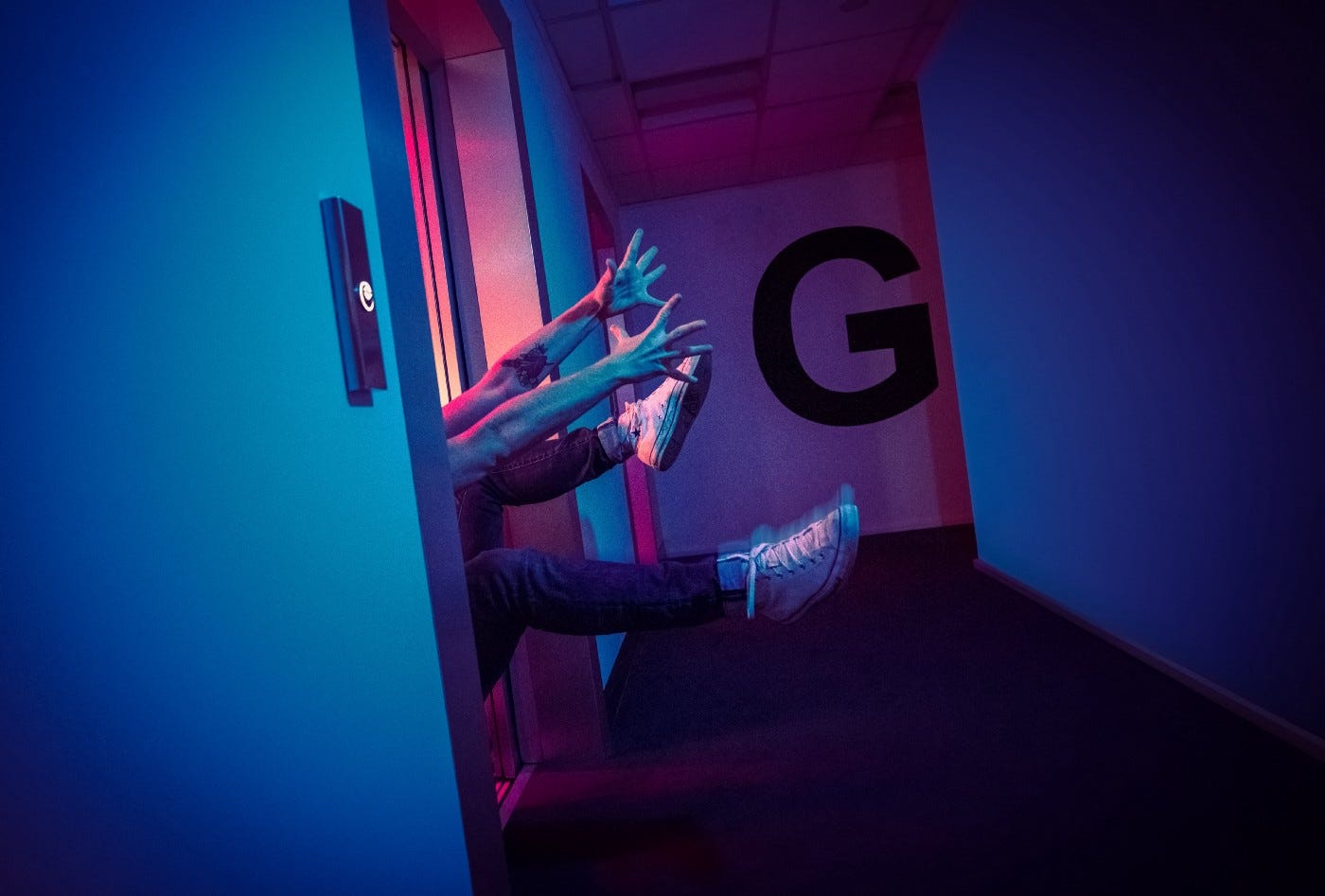
Shelley Snyder, London Curator
Eulogy, Darkfield
Hardly any set, takes place in pitch blackness, razor-sharp sound quality, and tactile feedback. Darkfield manages to take away all the spectacle of live performance and gives us back the sensory experience we didn’t know we were missing in this intimate and exposing experiment in in-person productions.
House of Cenci, Parabolic Theatre
Part text-based online adventure, part video game, part timed online broadcast, House of Cenci was a remix of the Zoom performance format. Viewers could take literal hours to find all the hidden secrets of the map, and its four-acts-but-the-first-one’s free format set a brilliant precedent for future production companies to take note of, for return ticket sales and income generation.
The Drop, Swamp Motel
Elegantly understated brilliance. A production design that starts mundane and swiftly evolves into a master stroke of immersive engagement: puzzles, interactivity, sprawling set, improvisation, immersivity at its finest putting visitors in the starring role.
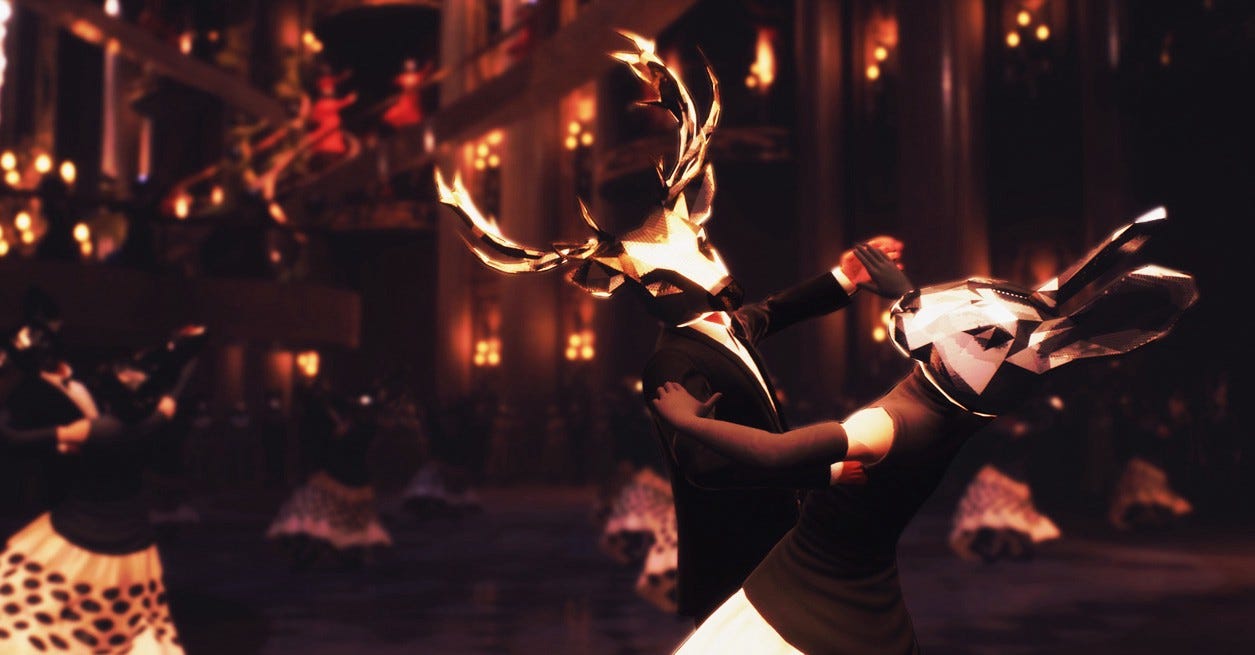
Kathryn Yu, Executive Editor
THE INVISIBLE, DARKFIELD
Darkfield’s VR experience, THE INVISIBLE (which showed as part of Digital Catapult’s Immersive Arcade earlier this year), takes the kind of abject terror possible using binaural sound to an entirely new level. Adapted from one of their infamous shipping container shows, this experience is less about making you think your environment isn’t as safe or familiar or normal as you believe it to be; here, the violent and controlling main character of THE INVISIBLE knows your name, who you are, who you came here with, and if you’re lying to him. You’re not so much piercing the veil or entering into his world as you are being abducted into it. You are his hostage. He is the kidnapper in control; he holds all the cards and he knows it. And when he says dance, you better dance.
Perhaps the most terrifying part about this all was knowing that even if I did open my eyes, I would see… only darkness around me within the confines of virtual reality in the Museum of Other Realities. The weight of my headset and the slight pressure of my headphones reminded me that I was tethered, fully enveloped in Darkfield’s sick, twisted world, whether I kept my eyes open or shut. Darkfield still controlled what I saw: all 360 degrees of blackness around me. And even if I did choose to take off the headphones and VR headset, and eject myself out of the experience (as I was tempted to do multiple times), well, it really didn’t matter.
Le Bal de Paris, Blanca Li
Le Bal de Paris — which I caught as part of Venice VR Expanded — takes you on a 40-odd minute journey through various sets as characters dance and sing their way through a plot about a young woman returning from her travels around the world and the young man that she left behind. It’s an adaptation of a location based multiplayer VR experience; the remote, solo version is set up as if you were literally present in a full-length musical. I found myself stunned by a grand, elegant ballroom with dozens upon dozens of non-player characters waltzing below me, as well as the callback to Ethel Merman-style synchronized swimming dance numbers that I watched from a virtual boat, and also a whimsical garden party that had more than a little Alice in Wonderland embedded in it.
Naturally, we end up boarding a train at some point and go to a Parisian nightclub with scantily clad dancers doing a choreographed number all around us. The piece also leverages a few classic immersive theatre tropes: characters prompting the audience into moving into the next set piece, as well as a performer who asks us to follow them.
I’ll admit, I even went through the Le Bal de Paris de Blanci Li experience twice to try to catch all of the dazzling details; frankly, I haven’t seen anything else like it in VR.
The Program, SF Neo-Futurists
Press 1 to continue, says the slightly flat, robotic voice on the phone. I sigh and press “1.” Press 1 to continue. I press “1.” Again. Press 6 to continue. I press the button. Press 77 to continue. I press the button. Then: some instructional gibberish crawls into my ears and there’s no way I can keep up. Press what, again? Just kidding! says the robot. I start laughing out loud.
The Program is an “immersive one-on-one theatrical performance” lasting about 45 minutes and conducted entirely over the telephone; it’s a strange, hilarious experience by the San Francisco Neo-Futurists who mine the tropes of an automated voice system for all its worth. Imagine if a phone tree kept you digging deeper and deeper and you never reached that live operator who was currently helping someone else; also imagine if, say, the interactive voice agent controlling said phone tree was a bit lonely, or jealous, or perhaps even… possessive.
I’d say more about The Program but that it would rob potential listeners of the joy of discovering its surreal and twisted telephonic world on their own should the experience ever return.
Honorable mentions: Goliath: Playing with Reality, Anagram; The House of Cenci, Parabolic Theatre; TM, Ontroerend Goed
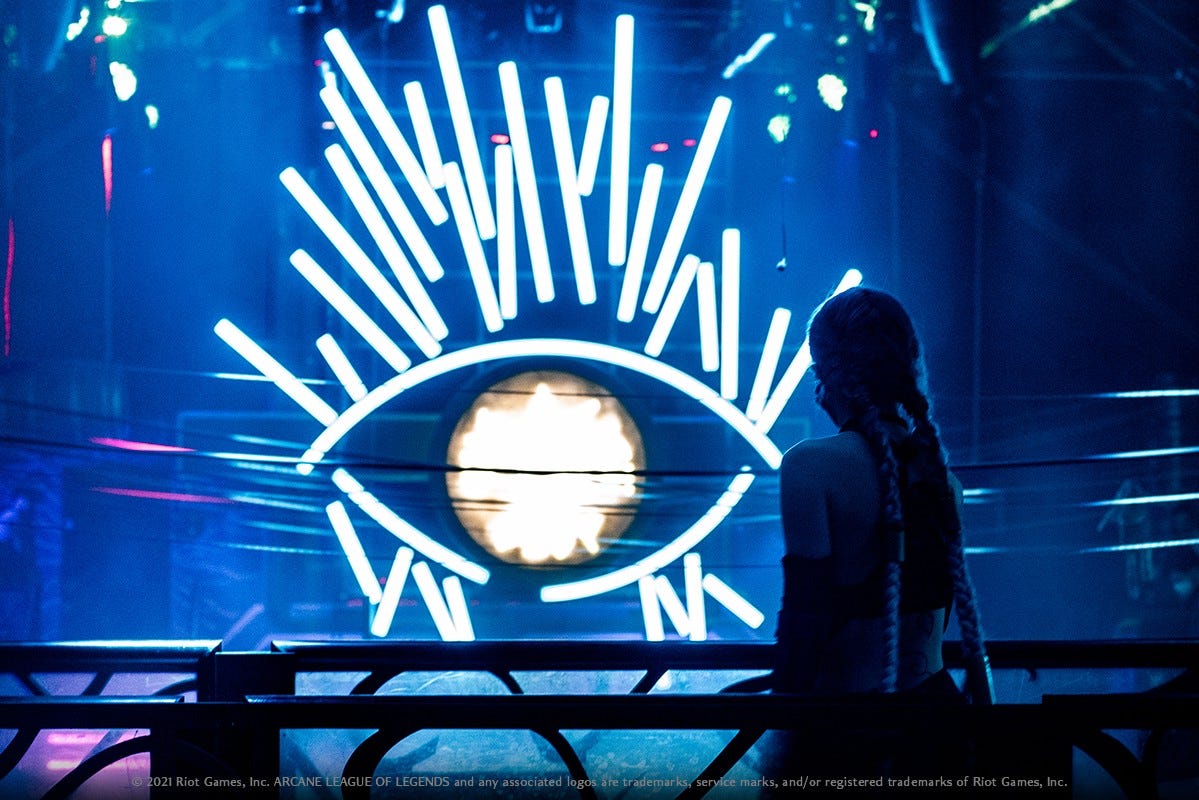
Noah Nelson, Founder and Publisher
Arcane: Enter The Undercity, Secret Cinema
The promise of successful immersive experiences based on existing fictional worlds is one of the articles of faith that our own project is based upon. Of course, here we also believe that things need to be good to be successful, even if the rest of the culture doesn’t always agree.
So what makes a pop-culture adaptation into immersive good? It’s the ability to translate the feeling from one medium to another. For a character driven narrative like Arcane, that means bringing the characters to life and letting us stand alongside them. Entangling our fantasy lives with their fantastical ones for a brief moment.
While the run of the show appears to have suffered from overcrowding as it went on, plenty of field reports after the initial weeks attested to that, the stunning bit of worldbuilding that Secret Cinema did on the back of Riot Games’ shockingly good animated series set a bar for ticketed, branded immersive experiences. This probably comes as no surprise to those who have had the pleasure of SC’s London work, but as a Stateside debut this was a triumph. The highs amongst the highest the form can offer, with the lows being that of any themed entertainment. (Which is to say: lines.)
My own experience, falling off the beaten path and remaining blissfully unaware of hidden rooms while having a ball just messing around with actors and other players, shows just how valuable a strong setting can be towards establishing a fun sandbox.
I got to work for the big bad of a favorite new show while dressed up with random stuff from my closet that basically fit the theme and everyone treated me like I belonged there. What more can we ask for?
Kusunda, Gayatri Parameswaran and Felix Gaedtke
As a medium for culture virtual reality is most interesting when it enables something that you just can’t do with any other form. Such is the case with Kusunda, a documentary piece that transports the viewer into the world of the Kusunda people of Nepal.
Kusunda is also the name of their language, and there are only a few speakers of it left in the world. Through volumetric video, game engine sequences, and voice recognition filmmakers Gayatri Parameswaran and Felix Gaedtke create an alchemical balance that puts the audience in dialogue, if ever so briefly, with the native speakers of the language whose voices drive the telling of the story.
Powerful stuff that must be experienced to truly understand.
Creep 2021, JFI Productions
It would have been enough for the team from JFI to just produce the kind of show they’ve made during LA’s Spooky Season for years: weird, sexy, spooky wrapped in a DIY asthetic that was more evocative than realisitc.
But after finding a permanent home near Hollywood’s theater row, the company brought in a production design team who worked on the award-winning The Nest and an experienced home haunter to up their game on two fronts. What resulted leapfrogged real and hit surreal, giving this year’s Creep the visual polish that one could always feel the company reaching for.
In a year where so much went wrong, it was thrilling to see something go so right.
Discover the latest immersive events, festivals, workshops, and more at our new site EVERYTHING IMMERSIVE, new home of NoPro’s show listings.
NoPro is a labor of love made possible by our generous Patreon backers. Join them today!
In addition to the No Proscenium website, our podcast, and our newsletters, you can find NoPro on Twitter, Facebook, YouTube, Instagram, in the Facebook community Everything Immersive, and on our Discord.






















Discussion